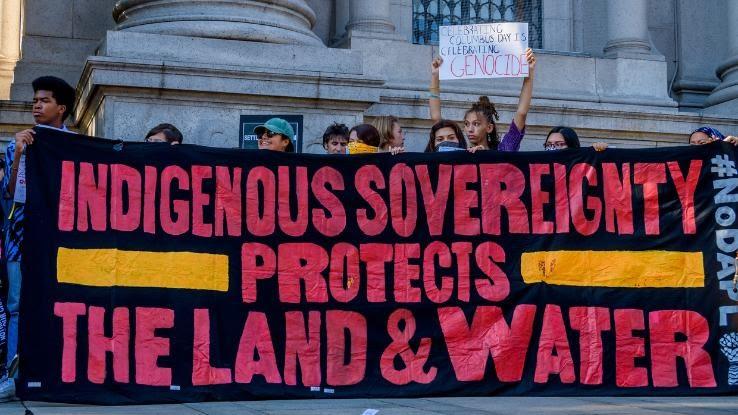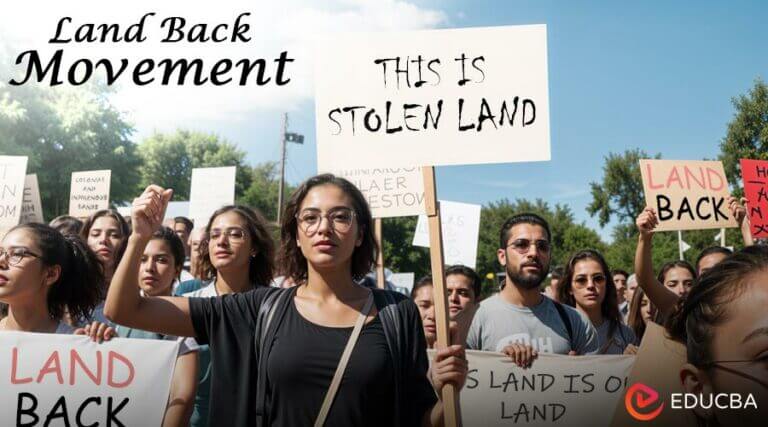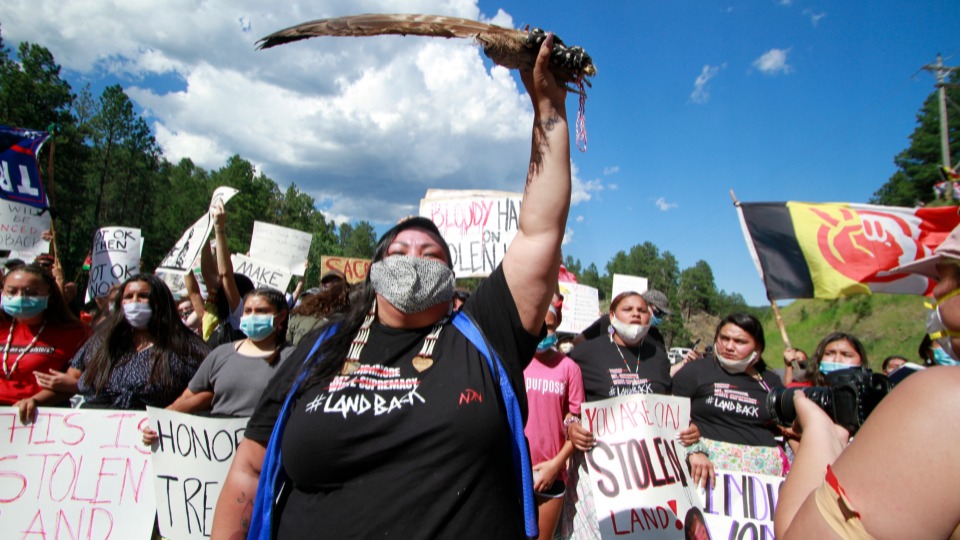
Reclaiming Sacred Ground: Native American Perspectives on the Land Back Movement
The earth beneath our feet holds stories, histories, and the very essence of identity for Indigenous peoples across Turtle Island. For centuries, these stories have been silenced, the histories erased, and the identities fractured by colonization. Today, a powerful, burgeoning movement known as "Land Back" is rising, demanding a fundamental shift in power, a reckoning with historical injustice, and the return of ancestral lands to Native American stewardship. It is not merely a slogan but a multifaceted, deeply spiritual, and intensely practical call for justice, sovereignty, and healing.
At its core, the Land Back movement is a demand for the restoration of Indigenous control over ancestral territories. This is not a uniform call for every acre of land to be emptied of its current inhabitants, but rather a spectrum of strategies and visions that seek to rectify historical wrongs, uphold treaty obligations, and empower Native nations. For many, Land Back is about more than just acreage; it is about the restoration of ecological balance, cultural revitalization, and self-determination.
A History of Dispossession: The Genesis of Land Back
To understand the urgency and depth of the Land Back movement, one must confront the brutal history of Indigenous land dispossession in North America. From the moment European colonizers arrived, a systematic process of theft, violence, and legal maneuvering stripped Native nations of their territories. Treaties, often signed under duress or outright fraud, were routinely violated. The Indian Removal Act of 1830 led to the forced relocation of countless tribes, most famously the Cherokee on the Trail of Tears. The Dawes Act of 1887 further fragmented tribal lands, converting communally held territories into individual allotments, often sold off to non-Native settlers, drastically shrinking the Indigenous land base.
Today, Native American tribes collectively control less than 2% of the land they once stewarded across the continental United States. This staggering loss of land is inextricably linked to the erosion of cultural practices, spiritual traditions, economic stability, and political sovereignty. As Nick Tilsen (Oglala Lakota), CEO of NDN Collective, a prominent Indigenous-led organization advocating for Land Back, states, "Land is not just soil; it is identity, spirituality, economy, and self-determination. Without our land, we are disconnected from our past, present, and future."

Diverse Visions for Reclaiming:
The phrase "Land Back" encompasses a wide array of perspectives and strategies within Native communities, reflecting the diversity of tribes, histories, and specific land claims.
-
Spiritual and Cultural Reclamation: For many Indigenous peoples, land is a living relative, a source of spiritual power, and the foundation of their identity. Ceremonies, languages, and traditional knowledge are deeply intertwined with specific places. The return of land, in this view, is not just a political act but a spiritual imperative, allowing for the resurgence of traditional ecological practices and the healing of historical trauma. "Our connection to the land is a sacred trust," explains Sarah James (Gwich’in), an Elder and activist. "It’s about more than ownership; it’s about relationship, responsibility, and reciprocity. When we have our lands back, we can heal ourselves and the land together." This perspective often emphasizes the return of sacred sites, burial grounds, and areas crucial for traditional hunting, gathering, and ceremonial practices.
-
Sovereignty and Self-Determination: Land is the bedrock of national sovereignty. Without a secure and adequate land base, Native nations struggle to exercise true self-governance, develop sustainable economies, and provide for their citizens. Land Back, in this context, is about empowering tribes to make their own decisions about resource management, economic development, and cultural preservation, free from external interference. It means the ability to implement tribal law, manage natural resources according to Indigenous values, and build a future on their own terms. This might involve the transfer of federal or state-owned lands to tribal trust status, the reacquisition of lands through purchase, or co-management agreements that grant tribes significant decision-making power.
-
Environmental Stewardship and Climate Justice: Indigenous peoples have stewarded their lands for millennia, developing sophisticated systems of ecological knowledge and sustainable resource management. As the world grapples with a deepening climate crisis and biodiversity loss, many see Land Back as a crucial component of environmental solutions. Studies have shown that Indigenous-managed lands often exhibit higher biodiversity and healthier ecosystems than surrounding areas. Returning land to Indigenous hands means restoring traditional fire regimes, promoting biodiversity, and implementing sustainable practices that benefit all. "Indigenous knowledge is not just ancient wisdom; it’s a blueprint for planetary survival," says a leader from the Confederated Tribes of the Umatilla Indian Reservation, highlighting efforts to restore salmon populations. "Land Back means letting us lead in protecting the water, the forests, the animals – because our survival is intertwined with theirs."
-
Policy and Legal Pathways: While the spiritual and cultural dimensions are paramount, the movement also navigates complex legal and policy landscapes. Strategies include:
- Treaty Enforcement: Demanding that the U.S. government honor its existing, often violated, treaty obligations.
- Federal Land Transfers: Advocating for the return of federal public lands (National Parks, Forests, BLM lands) to tribal trust status or co-management.
- Land Trusts and Easements: Working with non-profits and sympathetic landowners to establish land trusts or conservation easements that transfer land to Indigenous stewardship.
- Reparations and Buy-Backs: Utilizing funds or legal settlements to purchase ancestral lands from private owners.
- Legislative Action: Pushing for new laws that facilitate land return and strengthen tribal sovereignty.

Challenges and Misconceptions:
The Land Back movement faces significant challenges and is often met with misconceptions. A primary concern for some non-Native individuals is the fear of widespread displacement or the immediate loss of private property. However, proponents emphasize that Land Back is not about forcing individuals from their homes but about systemic change, particularly focusing on publicly held lands, corporate-owned resources, and lands acquired through fraudulent means.
"It’s not about kicking people out of their houses," clarifies Milanese (Anishinaabe), an activist involved in community land initiatives. "It’s about justice. It’s about recognizing that many of these lands were stolen, and it’s about finding creative ways to return them to Indigenous stewardship, whether through co-management, land trusts, or direct transfer of federal lands."
Legal complexities surrounding property rights, jurisdictional issues, and the sheer financial cost of reacquiring land also present formidable hurdles. Political will, often driven by public education and advocacy, remains a critical factor.
Moments of Progress and Hope:
Despite the challenges, the Land Back movement has seen significant successes and growing momentum:
- Bears Ears National Monument: In 2016, President Obama designated Bears Ears National Monument in Utah, largely due to a historic coalition of five sovereign tribal nations (Hopi, Navajo, Ute Mountain Ute, Ute Indian Tribe of the Uintah and Ouray Reservation, and Zuni). While its designation was later challenged, the subsequent restoration and expansion by President Biden in 2021 included a groundbreaking co-management agreement, giving these tribes a direct role in the monument’s management and protection – a powerful example of Land Back in action.
- Redwood National Park: In 2021, the National Park Service returned a 125-acre parcel within Redwood National Park, known as "O’men," to the Yurok Tribe. This land, rich in cultural significance and old-growth redwood trees, is now managed by the tribe, marking a tangible victory for cultural preservation and environmental stewardship.
- Maine’s Baxter State Park: Efforts are underway to return sections of Maine’s Baxter State Park to the Penobscot Nation, who have ancestral ties to the area, showcasing how state-level initiatives can also contribute.
- Private Land Returns: Numerous smaller, but equally significant, land transfers have occurred, where private landowners, conservation groups, or faith organizations have voluntarily returned parcels of land to local tribes.
- Growing Awareness: The movement has gained increasing visibility and support, moving from the margins to mainstream discourse, influencing public policy, and fostering deeper alliances with environmental and social justice movements.
A Path Towards a More Just Future:
The Land Back movement is not simply about rectifying past wrongs; it is a forward-looking vision for a more just, equitable, and sustainable future for all. By centering Indigenous knowledge and stewardship, it offers solutions to contemporary crises, from climate change and biodiversity loss to social inequality and systemic racism.
As Native communities reclaim their lands, they are not just taking back territory; they are reclaiming their narratives, rebuilding their nations, and restoring their inherent right to self-determination. It is a profound act of healing, not just for Indigenous peoples, but for the lands themselves and for the broader society that benefits from their wisdom and care. The journey is long and complex, but the call for Land Back resonates with the deepest human desires for justice, belonging, and a harmonious relationship with the earth – a call that demands to be heard and acted upon.


